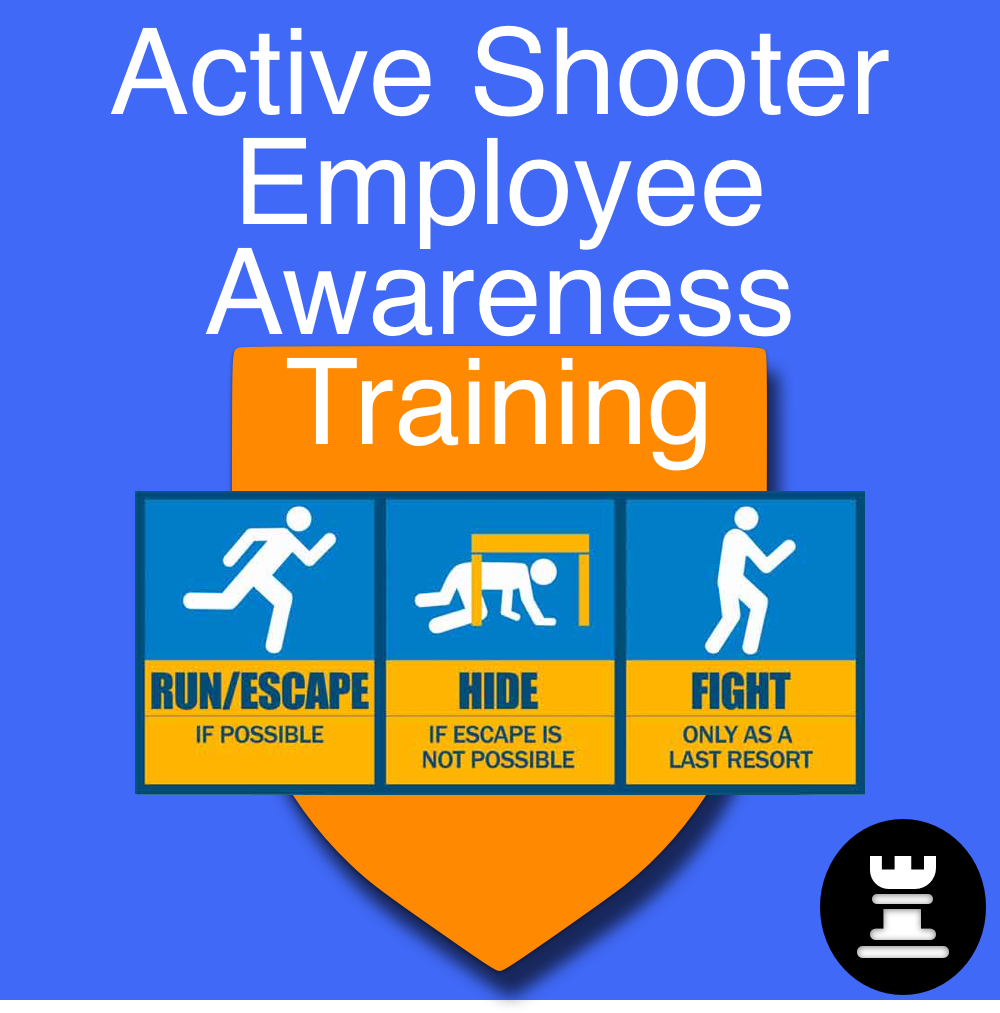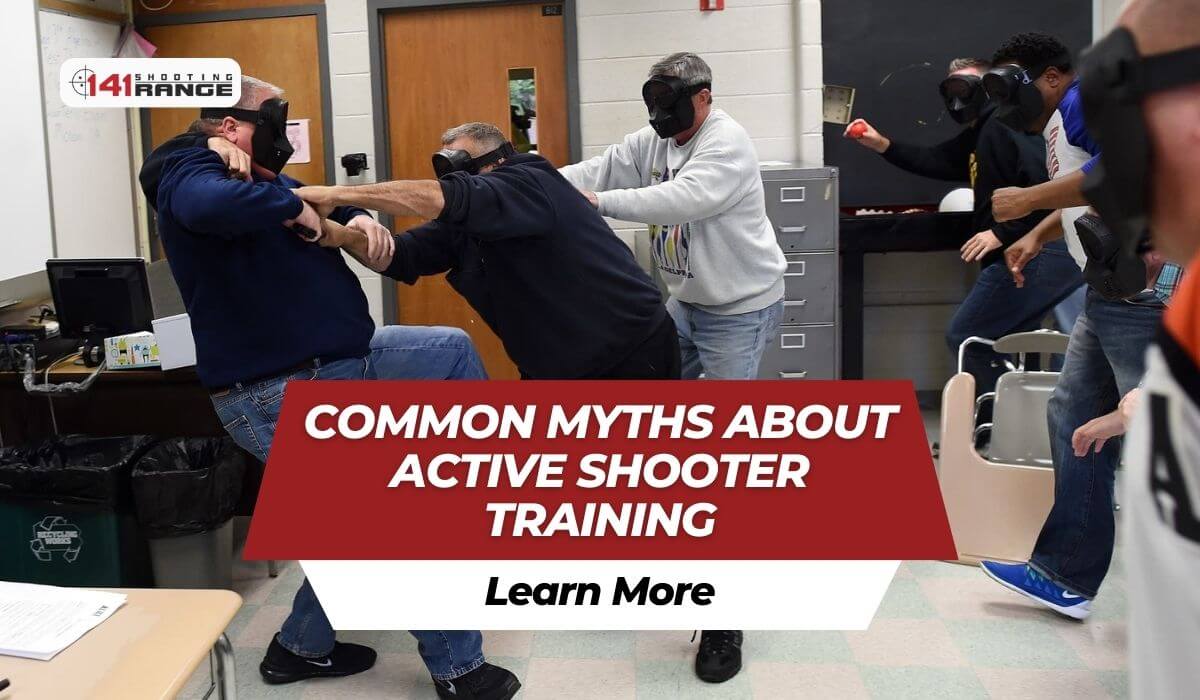Why Active Shooter Training Is Necessary for Work Environment Safety And Security
Why Active Shooter Training Is Necessary for Work Environment Safety And Security
Blog Article
Discovering the Key Elements and Purposes of Effective Active Shooter Training Programs
Active shooter training programs are vital in equipping individuals and companies with the necessary skills to respond effectively to prospective threats. These programs incorporate vital parts, such as the "Run, Hide, Battle" method, practical circumstance simulations, and communication procedures, fostering an atmosphere of readiness. They highlight psychological resilience to help individuals browse high-stress situations. active shooter training. As we discover the details of these training programs, it ends up being apparent that understanding their extensive nature is vital to enhancing safety measures and response capacities. What certain components absolutely specify their efficiency?
Significance of Energetic Shooter Training
Active shooter training programs are essential for improving readiness and action when faced with prospective risks. These programs aim to equip individuals, organizations, and areas with the expertise and abilities required to properly react to energetic shooter scenarios. The enhancing regularity and seriousness of such cases emphasize the relevance of proactive steps, as timely and educated actions can significantly reduce injury.

Additionally, these programs can help minimize the anxiousness and worry that commonly go along with conversations regarding prospective dangers. By giving organized advice and functional approaches, individuals acquire confidence in their capacity to react appropriately. Eventually, the significance of energetic shooter training depends on its potential to save lives, decrease injuries, and grow a ready and resilient community qualified of facing unforeseen difficulties.
Key Parts of Training Programs
Reliable active shooter training programs usually include numerous essential components developed to prepare individuals for real-world situations. The first part is detailed education on the nature of active shooter events, consisting of statistics, case research studies, and psychological factors that affect assailants. This theoretical structure is vital for fostering awareness and understanding among participants.
Next, programs commonly include training on individual safety and security actions, stressing the "Run, Hide, Fight" method. Participants learn how to analyze their setting, make quick choices, and take appropriate actions throughout a dilemma. Furthermore, the addition of effective interaction skills is essential, as participants have to recognize just how to report cases and share vital details with law enforcement.
Another vital element is the involvement of law enforcement or safety experts, that give insights into tactical responses and the significance of collaboration throughout a situation. Furthermore, programs need to resolve the psychological results of an energetic shooter scenario, offering methods for coping and recuperation.
Finally, ongoing training and correspondence course are essential to make certain that understanding continues to be present and participants feel great in their abilities. With each other, these key parts produce a well-shaped training program that equips people to respond successfully to an active shooter event.
Realistic Scenario Simulations
Reasonable situation simulations are an important element of active shooter training programs, providing participants with the chance to engage in hands-on practice that mirrors prospective real-life scenarios. These simulations improve the training experience by developing an immersive environment where people can use theoretical expertise in sensible setups.
With the usage of role-playing, mock scenarios, and specialized training facilities, participants experience the immediate difficulties and stressors related to an active shooter incident. This approach of training promotes fast decision-making, team effort, and the application of security protocols under stress. It permits responders to create critical skills such as situational recognition, threat assessment, and efficient discharge treatments.
Furthermore, he has a good point realistic simulations aid to recognize prospective weaknesses in individuals' feedbacks, enabling fitness instructors to give targeted responses and boost total readiness. The unification of differing circumstances, consisting of various locations and aggressor accounts, additionally enriches the training experience, guaranteeing that individuals are well-equipped to handle a series of prospective situations.
Inevitably, these simulations serve not just to advise yet additionally to construct self-confidence among participants, cultivating a sense of readiness that is necessary for effective emergency feedback when faced with an active shooter hazard. active shooter training.
Interaction Techniques in Training
Clear communication is essential in active shooter training programs, as it directly affects the performance of feedback efforts throughout a situation. Training participants need to comprehend the methods and treatments that will direct their activities if faced with an active shooter circumstance. Establishing clear lines of interaction guarantees that all individuals included can relay details immediately and accurately.

In addition, training programs should emphasize the significance of energetic listening. Ultimately, effective interaction approaches are vital for preparing people to respond emphatically and cohesively in the face of an energetic shooter occurrence.
Mental Preparedness Methods
Emotional preparedness strategies are progressively identified as vital parts of active shooter training programs. These strategies aim to equip individuals with the mental resilience required to internet respond properly in high-stress scenarios. By promoting an attitude attuned to prospective threats, individuals can better handle concern, stress and anxiety, and confusion during crucial events.
Trick mental preparedness methods include scenario-based training and tension shot exercises. Scenario-based training immerses individuals in reasonable simulations that mimic the disorder of an energetic shooter event, enabling them to exercise decision-making under pressure. This direct exposure aids build knowledge with emergency situation procedures, enhancing natural actions.
Tension vaccination involves gradual exposure to stress-inducing circumstances, allowing people to develop coping devices. This can include breathing exercises, visualization techniques, and cognitive restructuring to reframe negative ideas. By integrating these methods, training programs can cultivate a feeling of self-confidence and control, which is vital in crisis situations.
Furthermore, post-incident psychological assistance is essential to attend to the psychological aftermath of an active shooter occasion. Integrating psychological health sources into training programs not only prepares people for immediate responses but additionally promotes long-term mental wellness, ultimately contributing to a much safer and more resilient atmosphere.
Verdict

Report this page